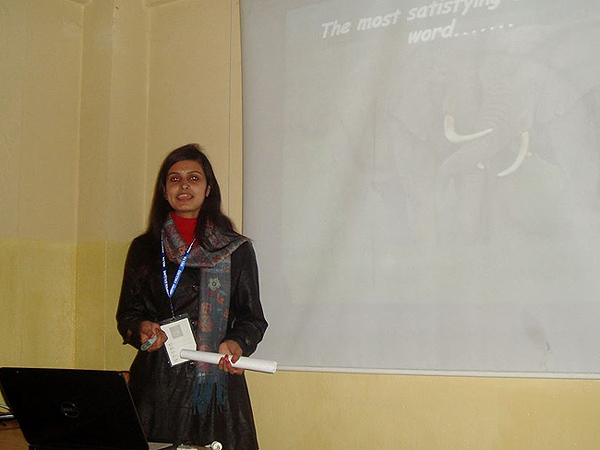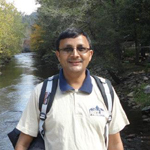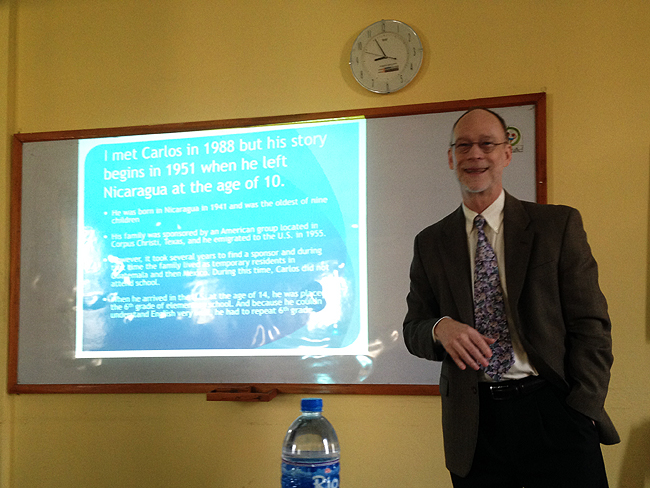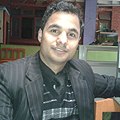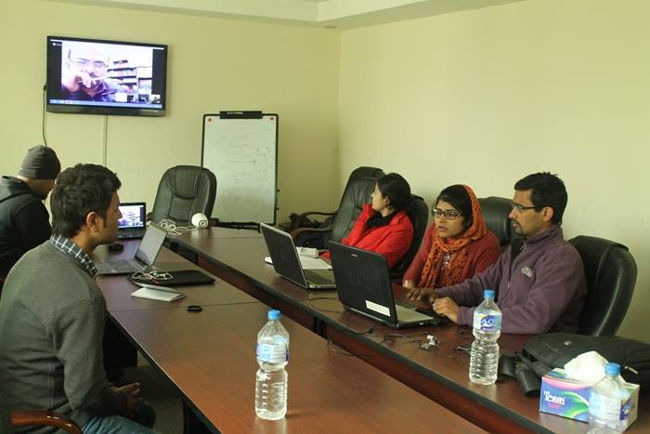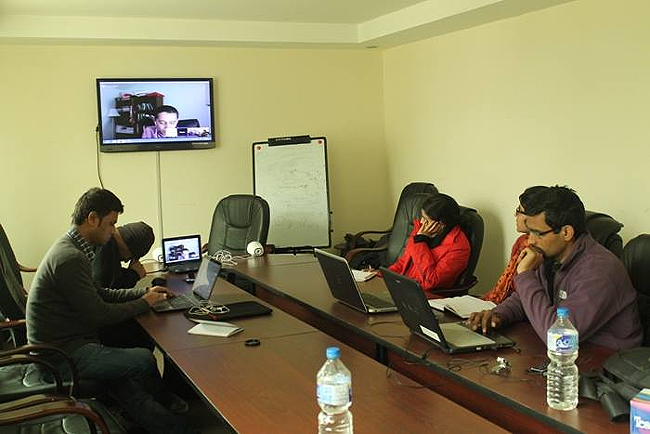Chandra Pd. Acharya
Before I started pursuing my master’s degree in English education at Tribhuvan University, Kathmandu, I didn’t have any inkling that YouTube, a video sharing website, was there. On my birthday, one of my girlfriends gifted me a laptop and she suggested me to spend some of my study hours on YouTube surfing educational videos. For the first time, I learnt about the video sharing website. No sooner had I came to know about this than I befriended with it since it turned to be like a friend in need is a friend indeed. In this blog entry, I have shared my experience of using YouTube for enhancing my English language competency.
In the initial days, I did not exactly know how to use YouTube. I did some researches on web and however, some odd months later, I got the idea as a result of learning by doing, and kept on using it to the fullest. The English pronunciation that I have commanded over today is the outcome of watching English videos uploaded on YouTube. My current English is gratifying me, even some of my friends find it awesome. But, I love to opt for ‘good’ rating for the good has a chance to learn it for the better as learning begins from cradle and lasts to grave. So my English learning through YouTube surfing could by no means be an exception provided that I had in one way or the other fallen in love with it. Once in love, forever in love, I think I internalized this adage. To be honest, surfing YouTube videos time and again became my forte and I am damn sure it will continue till my last breath. Maybe this is because of my forever longing. Now I feel I should immensely grateful to three former PayPal employees Steve Chen, Chad Hurley, Jawed Karim who fathered YouTube in February 2005.
The point I want to make is YouTube for me was the best way to learn English however there are a lot of means available these days. So choose whichever you think the best. Truly speaking, my passion for YouTube surfing was and is to expand the storage of vocabulary and to polish the fluency in speaking English. Hence my penchant for YouTube surfing gives birth to this article.
As I believe fluency in English is the key important factor for people around the world for communication in English. It is one of the important language components to be developed. Fluency is a speech language pathology which means the smoothness or flow with which sounds, syllables, words and phrases are joined together when speaking quickly. Hence, fluency in English can be termed as ease and smoothness of speaking. Stressing much on this feature of language, Brumfit (1984, p. 56) opines fluency as natural language use.
Generally, we need to make our fluency a comfortable one so that the communication moves ahead between the parties (encoder and decoder). It gets matured through simple day-to-day tea talk to public speaking. Likewise we have to know the organization, pronunciation, word use, body language etc. Here, I am pinpointing some of the important guidelines required to become those who want to develop their fluency in English through YouTube.
1. Technical Qualities
Here ‘technical qualities’ refers to overall qualities of videos available in YouTube. This includes clarity, video resolution, sound effect, etc. As suggested by Mullen & Wedwick (2008) and Trier (2007), quick access to vast quantity of video database provides a great deal of opportunities in enhancing learning. The video clips downloaded from YouTube or other similar websites are very educational and practical to use. For instance, in the technical dimension, many users claim that online videos clips are high in quality. According to Hubbard (2009), attributes like fine audio and visual are very important in aiding learning and sustaining the interest of learners. Thus, the quality of freely available YouTube videos is good, and learners can be benefitted from them without difficulties.
2. Content Focused
The contents of selected video clips do not only meet individual learners’ need, but also help them learn how to present the information attractively and effectively. Muniandy & Veloo (2011, p. 177) conclude that “the claim of many users and researchers on content of video clips uploaded online are indeed presented in a dynamic way that can enhance mastering of English language among students.” This is highly concerned with the language used is appropriate or not, the language used is conversational in nature or not, the videos scaffold constructive learning or not etc.
3. Engaging
The next important this that a learners should consider while surfing YouTube is whether the videos can engage learners or not. Mostly the content of online video clips are indeed engaging and could help learners to be more focused. At the same time one should consider the following things in his/her mind i.e. whether the contents of videos are attractive or not, either they are well organized or not, whether the duration of the videos are appropriate or not, is the content easily understandable or quite difficult.
4. Optimistic Attitude
‘Optimistic attitude’ refers to the positive expectancy that one gets after surfing the videos in YouTube channels. Frankly speaking the learners themselves should be very optimistic about the outcome of surfing the video clips. To this one should be sure that they learn something and the reforms will take place. Thus optimistic attitude and keenness is also a strong indication so that the learning goes at pleasant manner and becomes strong one near natural future. To this, the criteria to be considered are; whether the video more interesting or not, whether the videos can capture and retain ones’ attention or not, can the videos generate new ideas or not.
As similar to the saying, ‘the better learners today are the better teachers tomorrow; a learner should keep the above mentioned things in one’s mind in order to strengthen fluency in speaking English. There is a belief based on research findings that the more one use video clips either from YouTube or any other online sites the better the fluency s/he develops. And the ability they earn woks as a mechanism in their future teaching. This can be their public image among the learners they deal with.
Likewise, I think it would be better if I mention some of the links of YouTube videos I went through and visit these days too in timed conditions for developing fluency in English. One of the effective video clips I went through in the beginning days was ‘Learn How to Speak English Fluently and Confidently’ [youtube=http://www.youtube.com/watch?v=va8ESm0tQCI]. This was a tutorial like video clips that added some skills of speaking fluently on my side. The clip suggests that the more one listens the better he speaks.
Similarly, a video clips entitled ‘Fluency in English’[youtube=http://www.youtube.com/watch?v=E_uTu3dGI84] talks about the suprasegmental features such as stress, length, rhythm, tone etc. in a practical basis. The video further suggests that practice and practice until one gets what he wanted to get is the key thing in developing fluency in English.
The other effective video clips that taught me a new kind of lesson was ; ‘How Do You Speak English? Speaking Exercises To Improve Your Fluency in English’ [youtube=http://www.youtube.com/watch?v=sKuu3Wwr_3g] What I learnt through this video is that I have developed fluency one need to speak as s/she sings a song in his/her native tongue. Regarding this ideas, here I would like to connect suggestion from one of my Gurus that if one needs to be a good speaker in English, s/he needs to speak it as similar to his/her native language.
However, one of major problems in teaching students I have noticed is how to make the teachers’ talk comprehensible to the learners. Traditionally, the input, the subject matter in general, had been directly translated into the students’ mother-tongue. Teacher used to be like a bilingual dictionary having meaning of one word into two languages. The job of students was not to exercise mentally to extract the teachers talk but to memorize and repeat spelling and meaning time and again to form habits. But, at present this approach has become obsolete. Now, the main objective of teaching speaking skills is to make students able to make teacher talk as comprehensible as possible so that the learners can themselves be familiar with the content delivered in different contexts. So, a teacher needs to use numerous ways to make input comprehensible so that the pattern of rote learning gets avoided.
Another significant problem with developing fluency in speaking English is that what has been learnt today is often forgotten tomorrow. Hence, to speak smoothly, smart usage of vocabulary is also important which can also be possible through English videos. For this, one should surf the videos in an appropriate time interval. Besides, to boost up fluency in speaking, it is advisable not only to revise the video clips periodically, but also start each day with a new clip and practise, and imitate it throughout the day. In addition, it is necessary to develop the habit of making casual talks with the friends.
Frankly speaking, for me, to develop my fluency in speaking I didn’t felt hesitation to make talks in English with a tourist from core English speaking countries to varsity teachers from home and abroad either through online video calls or the face-to-face context-specific conversation.
To draw a conclusion from my experience shared here, I feel myself proud of developing an adage that the enormous number of video clips available online or offline can be a gateway to success in developing fluency in speaking English. However, one needs to be careful to select appropriate clips based on his knowledge and understandings in English so that the pace of his/her making fluency in speaking English gets matured in a natural way. This will help the users capable for earning bread and butter in their career.
Now I would like to retrospect to reiterate if she was the best friend, who gifted the laptop with internet access, or the laptop with internet access. But I feel the latter is the best of the best for me because YouTube has been a great companion to develop my fluency skills.
References:
Brumfit, C. (1984). Communicative methodology in language teaching: The roles of fluency and accuracy. Cambridge: CambridgeUniversity.
Hubbard, P. (2009). A general introduction to computer-assisted language learning. In Japan. Retrieved on 11th Feb, 2011 from http://www.robon.org/gary/captioning
Mullen, R. & Wedwick. (2008). Avoiding the Digital Abbys: Getting Started in the Classroom with YouTube, Digital Stories and Blogs, Vol.82 (2), 66-69.
Muniandy, B. & Veloo, S. (2011). Managing and Utilizing Online Video Clips for Teaching English Language: Views of TESOL Pre Service Teachers. 2nd International Conference on Education and Management Technology. IPEDR vol.13 (2011) © (2011) IACSIT Press, Singapore.
Trier, J. (2007).“Cool” engagements with YouTube: Part 1. Journal of Adolescent and Adult Literacy 50:408–12.
—

Chandra Prasad Acharya
Masters in English Education, TU


